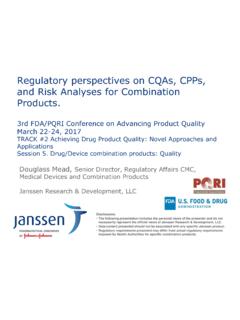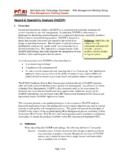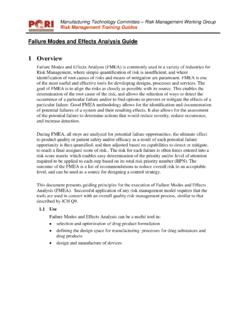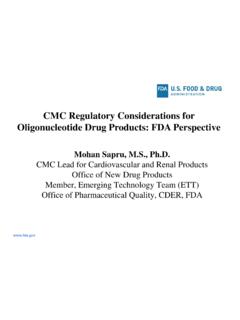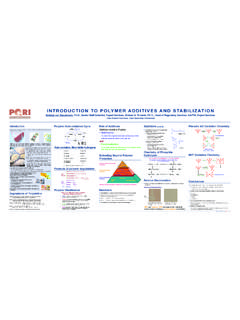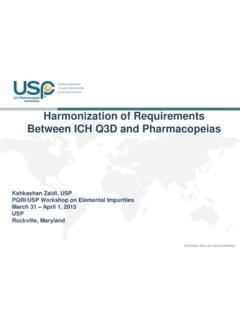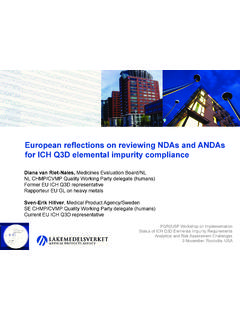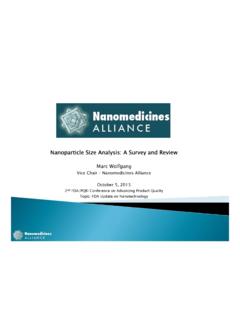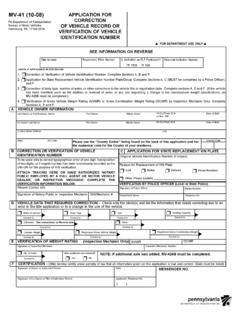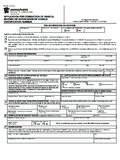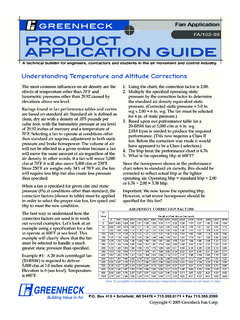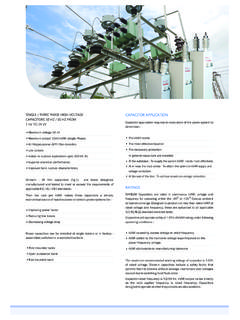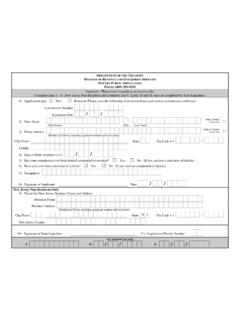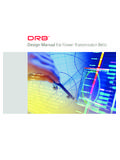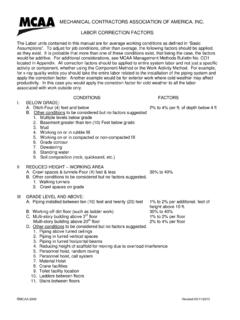Transcription of Recommendations for the Assessment of Blend …
1 Recommendations for the Assessment of Blend and Content Uniformity: Modern Approaches to Sampling and Testing James K. Drennen, III. Unprecedented Change Technology Philosophy/Regulatory Methodology QbD approach Risk Assessment Design Space Efficient Calibration Calibration Management Automation and Control Performance based ( clinically relevant ) quality specifications and Quality Metrics 2. Regulatory Draft Guidance for industry, Powder Blends and Finished Dosage Units- Stratified In-Process Dosage Unit Sampling and Assessment . Department of Health and Human Services, Food and Drug Administration, Center for Drug Evaluation and Research (CDER), October 2003; withdrawn.
2 United States Pharmacopeial Convention, USP 37. NF 32, USP General Chapter <905> Uniformity of dosage units, general notices and requirements, Section , Applicability of Standards. 3. Blend Uniformity- Content Uniformity USP <905> does not use a statistical sampling plan, therefore the results provide limited statistical assurance that future samples from the batch would meet acceptance criteria. FDA no longer supports the approach stated in the withdrawn guidance document nor the use of USP. <905> for batch release 4. A Proposed Solution Modifications to the withdrawn draft stratified sampling guidance document are proposed by the ISPE Blend Uniformity and Content Uniformity Group To assess adequacy of mixing to assure uniformity and homogeneity of the finished product in accordance with cGMPs Method accommodates.
3 Various statistical approaches PAT methods 5. Manufacturing Process PAT. PAT. 6. ISPE Recommendations Recommendations for the Assessment of Blend and Content Uniformity: Modifications to Withdrawn FDA Draft Stratified Sampling Guidance . J. Pharm. Innov. (2015) 10:76-83. Assessment of Blend and Content Uniformity. Technical Discussion of Sampling Plans and Application of ASTM E2709/E2810 . J. Pharm. Innov. (2015) 10:84-97. 7. ISPE Recommendations Recommendations for the Assessment of Blend and Content Uniformity: Modifications to Withdrawn FDA Draft Stratified Sampling Guidance.
4 Recommends approach . Provide increased confidence that future samples drawn from the batch will comply with USP <905>. Link Blend and content uniformity Process design and qualification Continued process verification J. Pharm. Innov. (2015) 10:76-83. 8. Modified Approach for Assessment of Blend and Content Uniformity for Process Design and Process Qualification Batches J. Pharm. Innov. (2015). 10:76-83. 9. Modified Approach for Assessment of Blend and Content Uniformity for Continued Process Verification J. Pharm. Innov. (2015) 10:76-83. 10. Implementation Notes BU analysis performed during manufacture of process design and process qualification batches Adjust sampling plans to batch size Dosage unit samples collected over entire compression/filling run Use weight correction for dosage unit CU as surrogate for Blend testing Use no weight correction for dosage unit test to be used for product release J.
5 Pharm. Innov. (2015) 10:76-83. 11. Sampling Plan and Application of ASTM Methods Assessment of Blend and Content Uniformity. Technical Discussion of Sampling Plans and Application of ASTM E2709/E2810 . Simple random sampling, Stratified sampling, and Systematic sampling ASTM method and tolerance interval approach provides a level of confidence ( , 90%) and coverage ( eg., 95% of future samples) that additional samples taken from the batch will meet USP <905> criteria J. Pharm. Innov. (2015) 10:84-97. 12. PAT METHODS FOR Blend . AND TABLET UNIFORMITY.
6 TESTING. 14. Tablet vs. Blend 270 sec 180 sec 90 sec 30 sec 16. Dissertation; Sameer Talwar, 2015. API Content Uniformity Tablet Quality Predicted Concentration (% w/w). 17 Tablet Sampling Time (Minutes). Batch N/3 90 seconds 3. Tablets out of Spec (APAP). 120. 100. 80. 60. 40. 20. 0. 18. Batch N/9 30 seconds 486. Tablets out of Spec (APAP). Tablet Batch N/9. 180. 160. 140. 120. Frequency 100. 80. 60. 40. 20. 0. Predicted Concentration (% w/w). 19. Achievable Level of Uniformity Complete Random Mixture (CRM) profile for 25 min. mixing time in APAP, Lactose, MCC mixture.
7 21. Dissertation; Sameer Talwar, 2015. CRM Profile of Homogenous System 22. Dissertation; Sameer Talwar, 2015. Blend vs. Tablet Uniformity Blend Tablet 23. Dissertation; Sameer Talwar, 2015. Content Uniformity 24. Dissertation; Sameer Talwar, 2015. Excipient Uniformity Tablet Quality 25. Conclusions ISPE BU/CU Group has proposed a useful framework for BU/CU testing PAT methods offer value Product Quality and Process Understanding Facilitate appropriate sampling Enhance Statistical Confidence 26. Thank You! 27.
